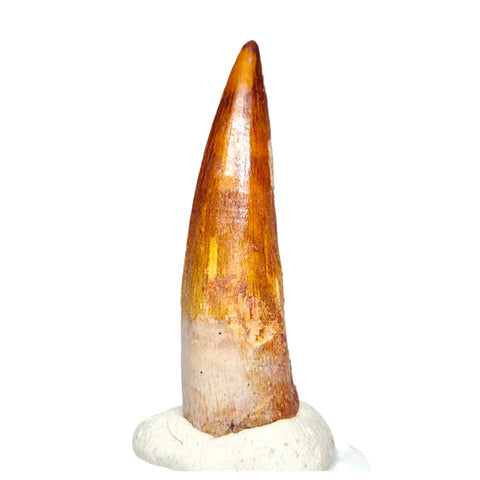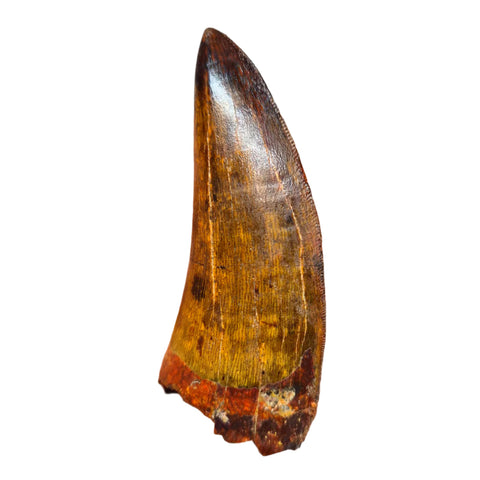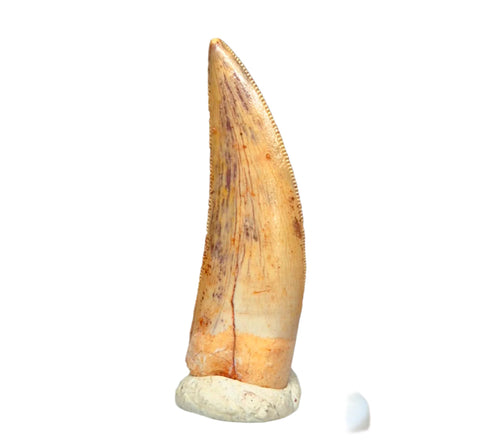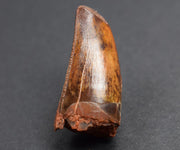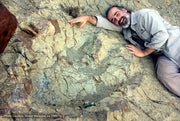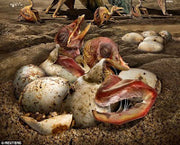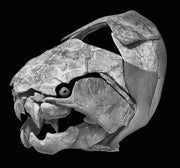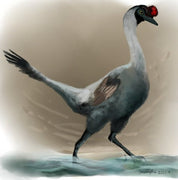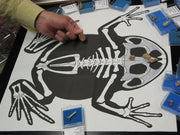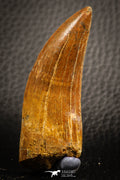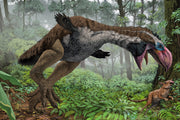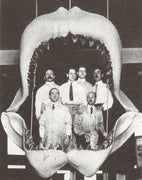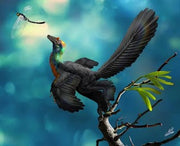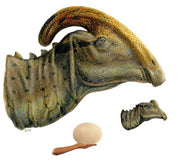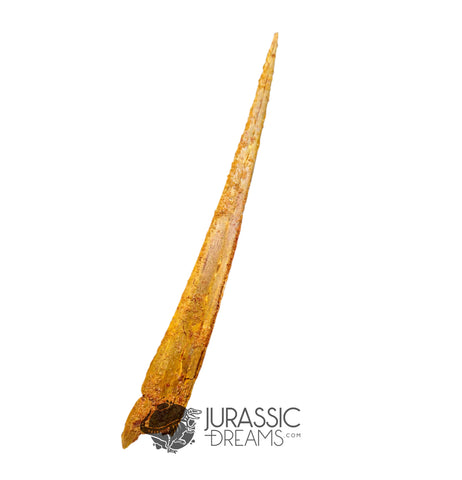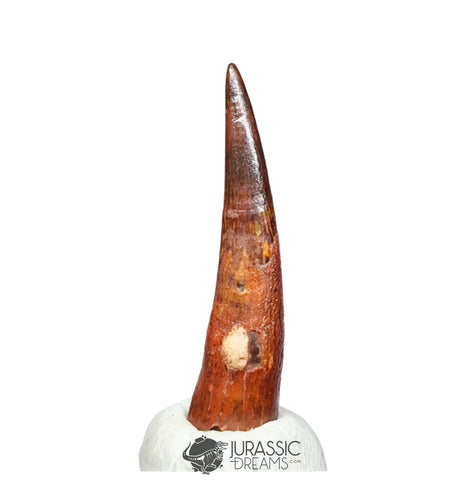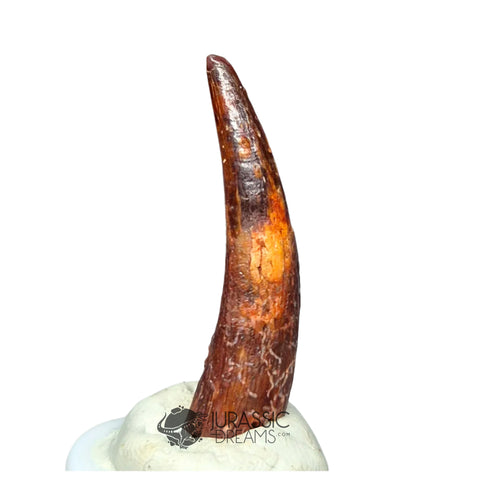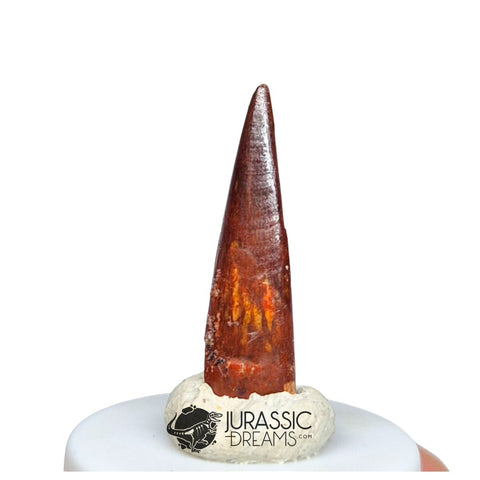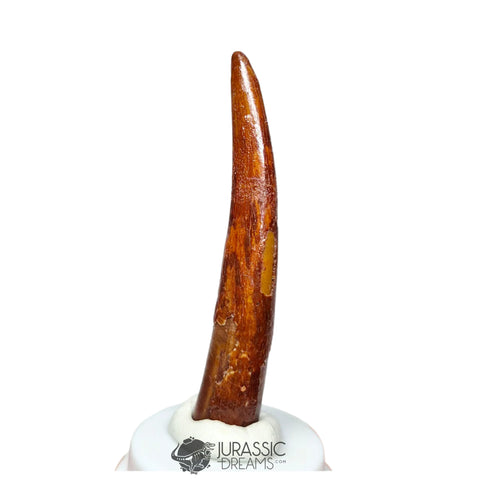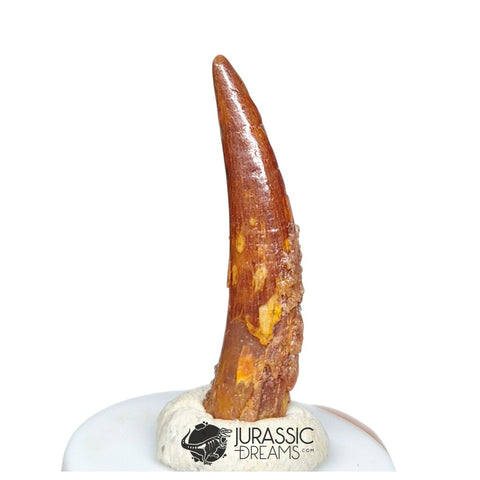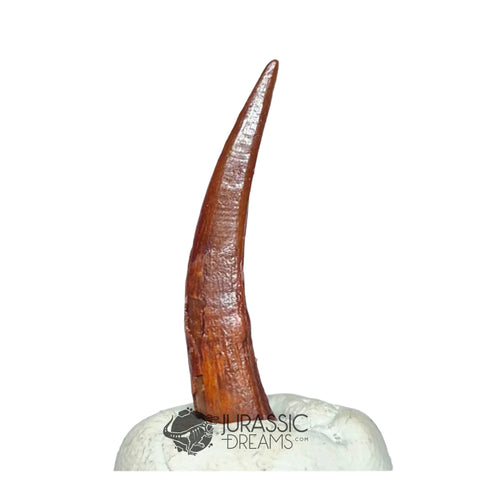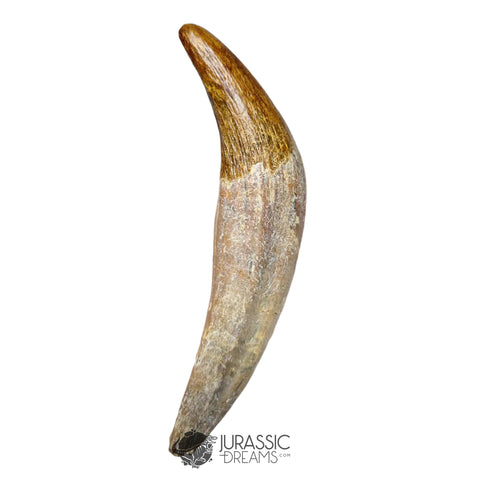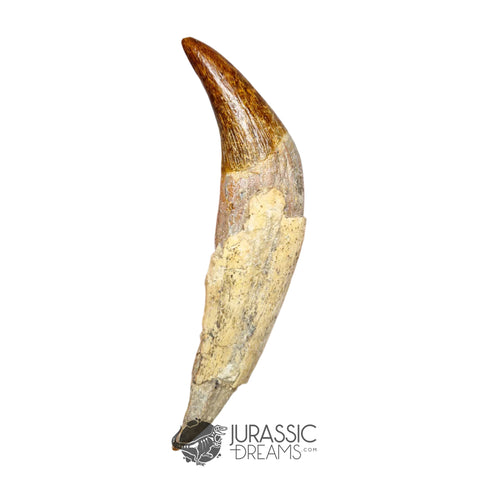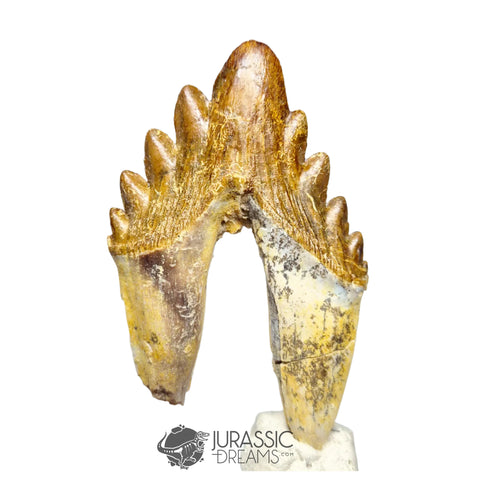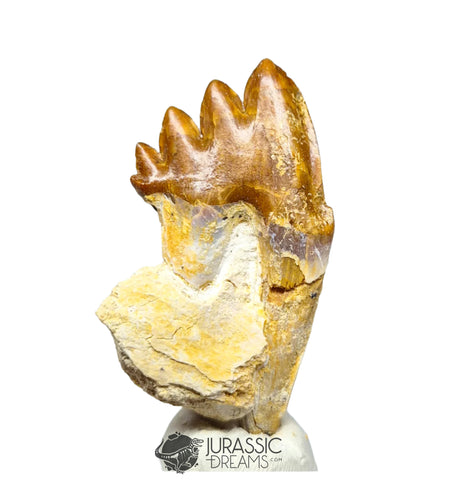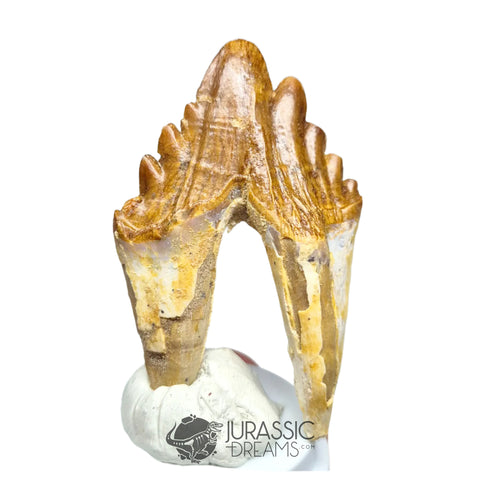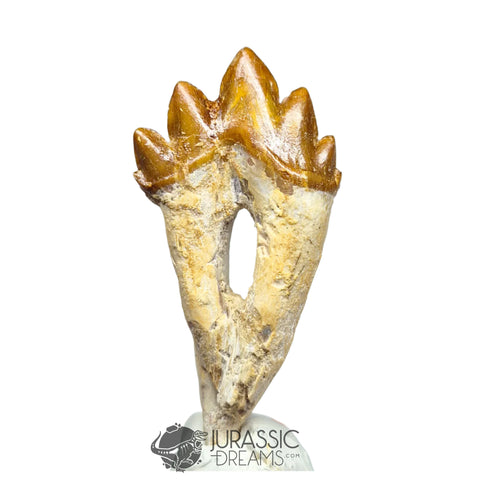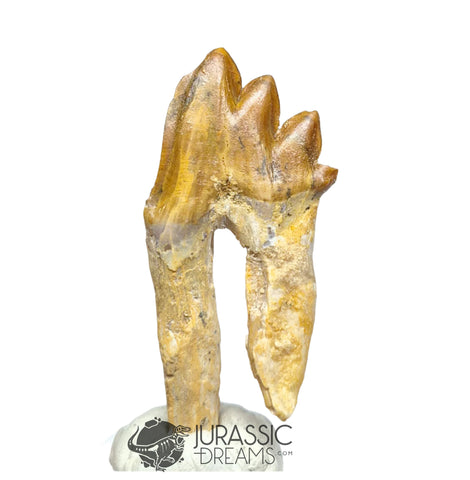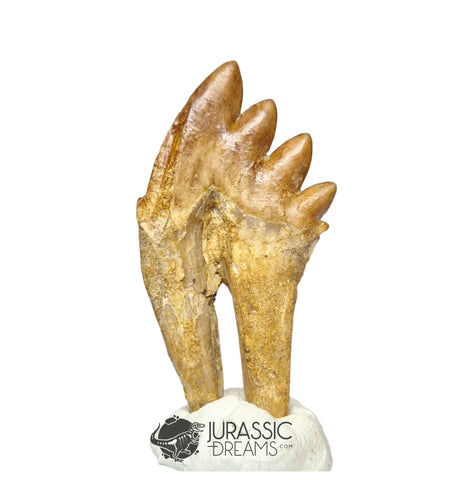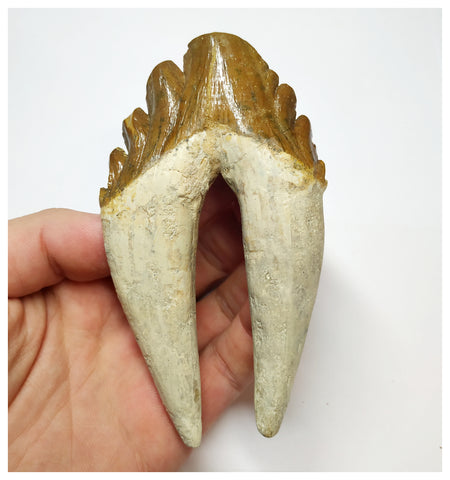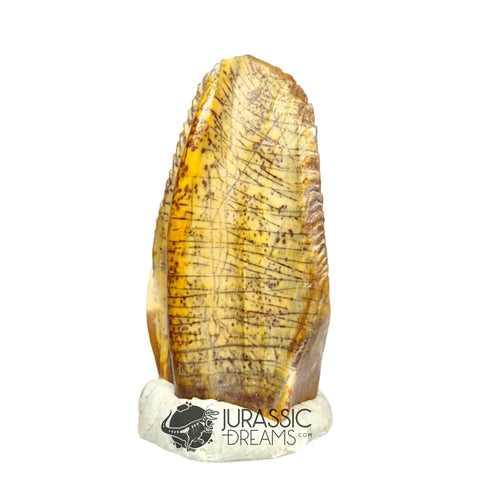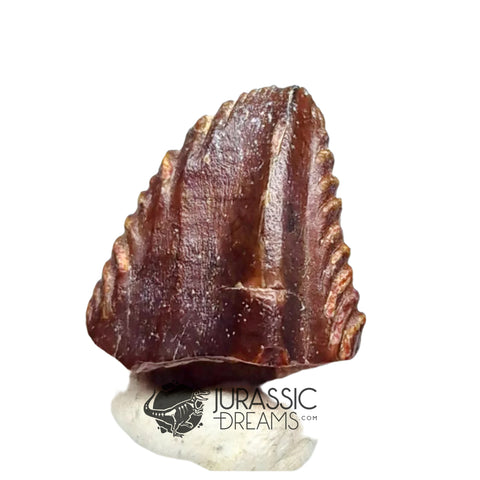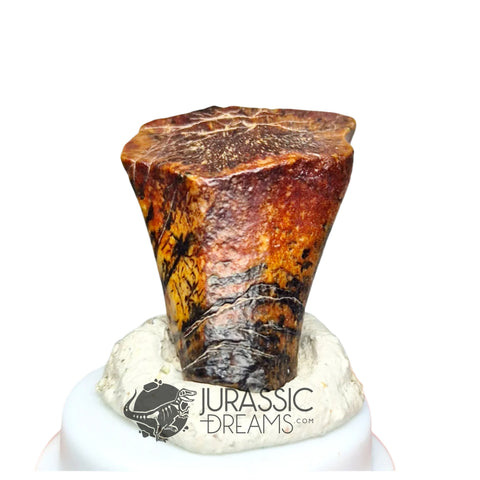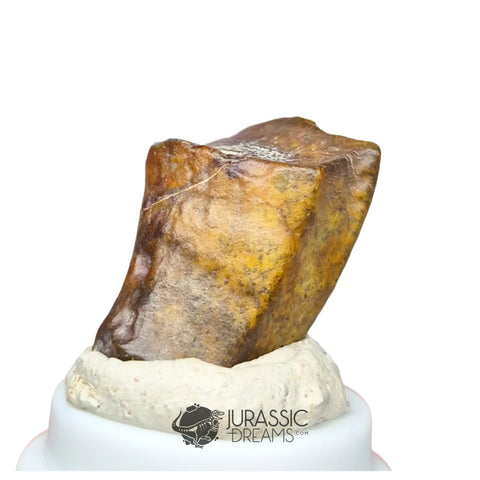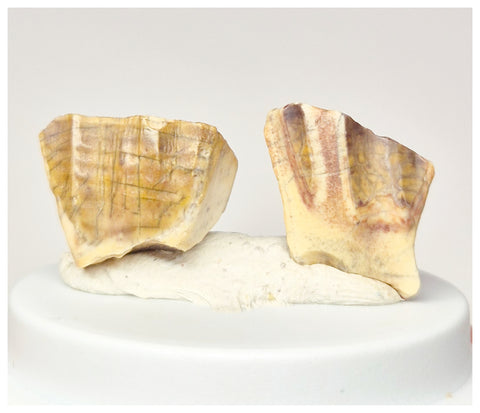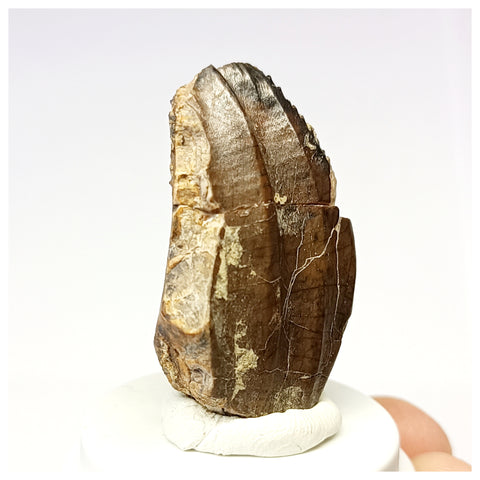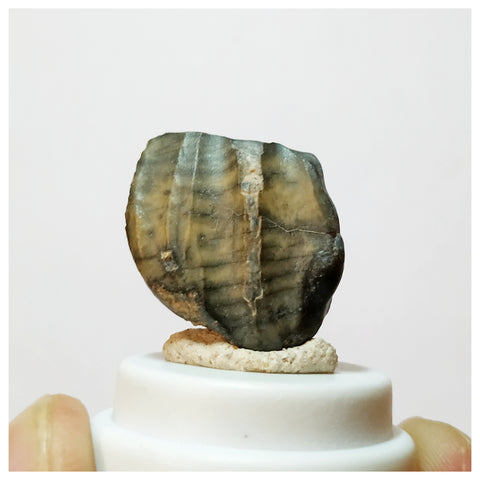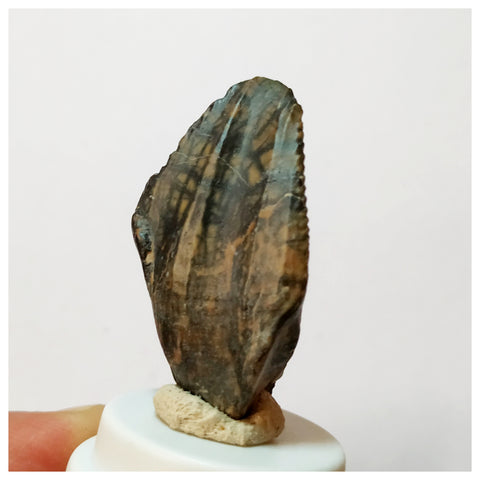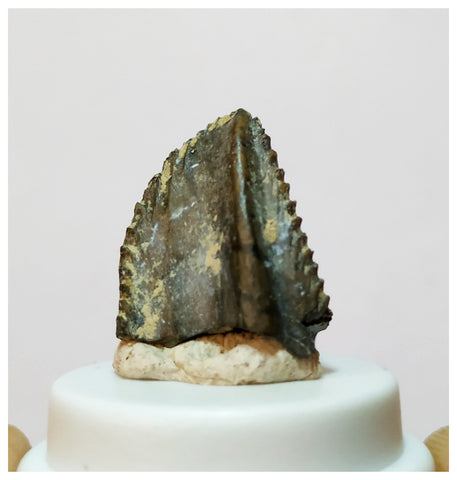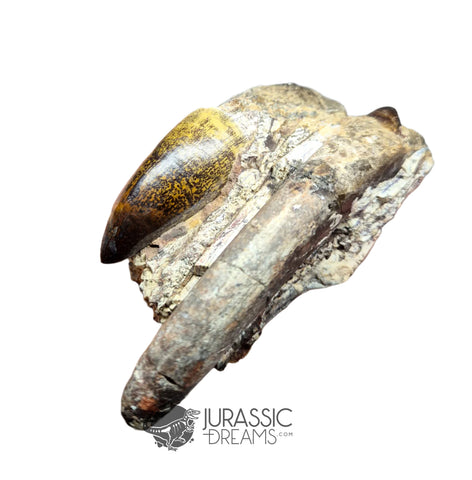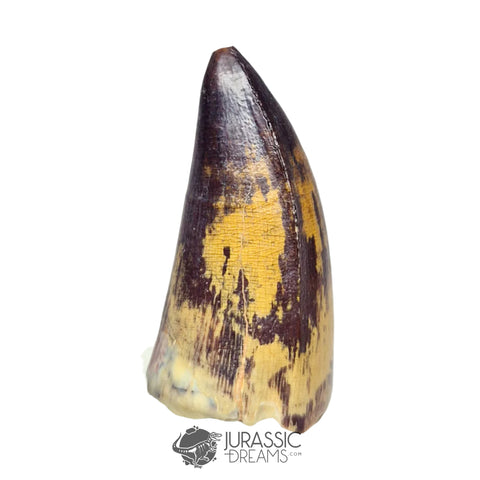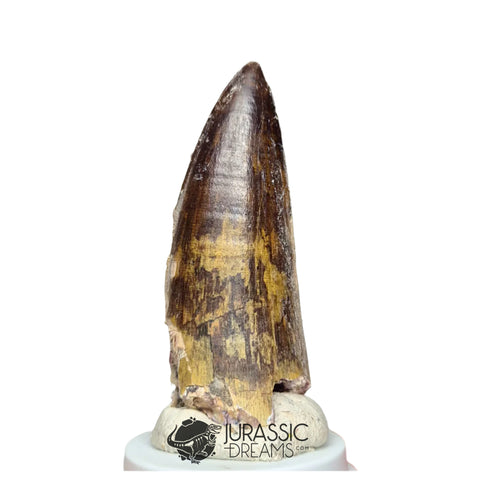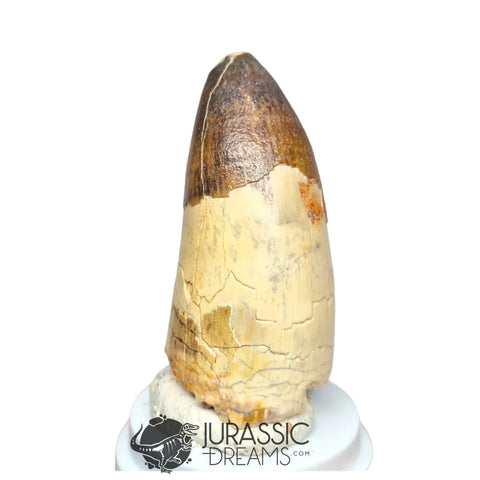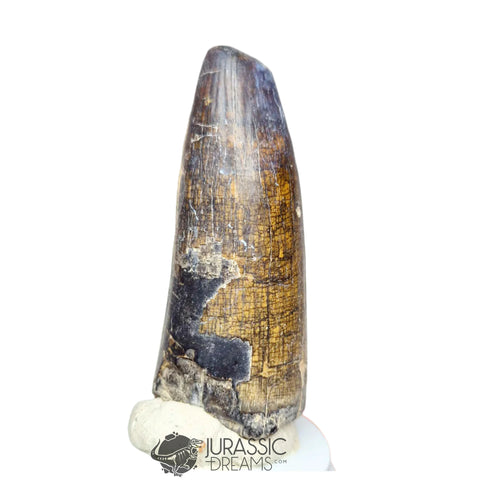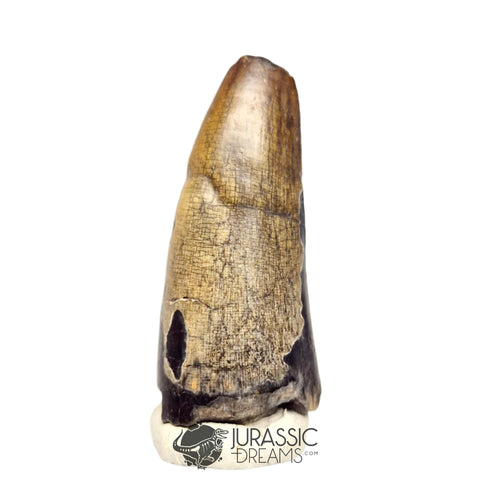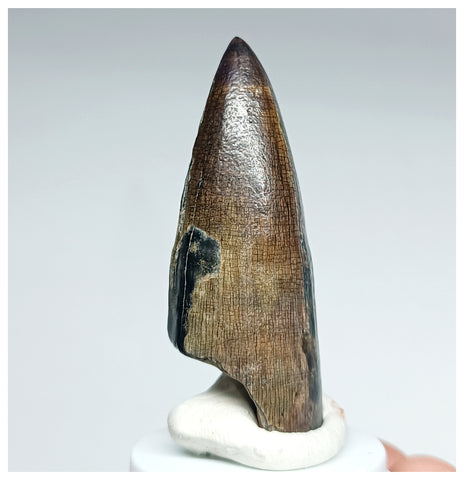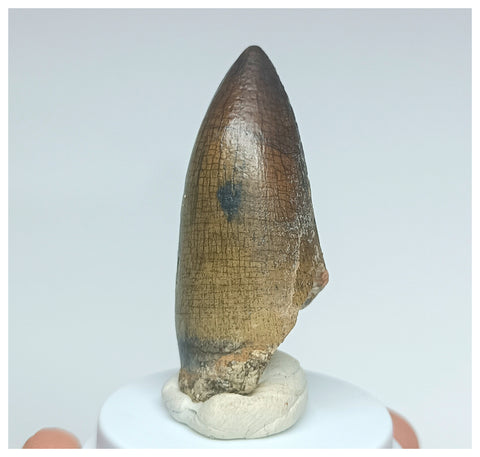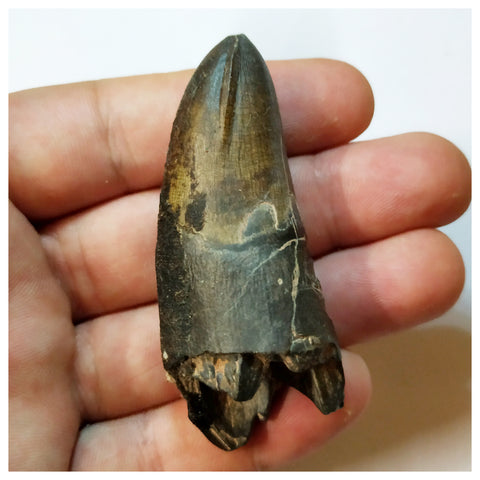Adult female, "joe" and Parasaurolophus egg.
In 2009, from the harsh sediments of southern Utah, in the United States, an enigma arose. The skeleton of a small herbivorous dinosaur, 180 cm long, posed a challenge for paleontologists: It was a dwarf duck dinosaur? or it was a young specimen of a known species?
To solve the enigma, the skeleton, exceptionally preserved, was submitted to several analyzes. The very fine cross section of one of the bones determined that the dinosaur had died during its first year of life. In addition, the bone cells appeared very abundantly, indicating a very rapid growth. That explained why "Joe", name with which the little dinosaur was baptized, had gone from measuring 50 cm at birth and reaching 180 cm in length in just one year.
"Joe", provided valuable information about the skin that these dinosaurs had on their feet, as fossilized skin remains were found on one of the feet. There was also the mark of the horny peak formed by keratin and that did not become fossilized. Thanks to that brand we can determine.

Skull of adult male Parasaurolophus, in yellow beak keratin.
Paleontologists knew it was a young dinosaur, but they did not know the species to which it belonged. The tomography of the skull, showed a series of small hollow channels that communicated its small crest with the nostrils. It seemed obvious that the dinosaur before them was a small Parasaurolophus, one of the dinosaurs with the largest and most striking crest.
For years, scientists had classified young dinosaurs of previously described species as "new species". Now we know that the Parasaurolophus grew very fast, and in just one year they reached 2 meters in length, and in 4-6 years they reached 10 meters in length, the adult size.

In green: hollow resonance channels. In purple: brain volume.
But not everything is yet written about these dinosaurs, it seems that what until now were considered different subspecies of Parasaurolophus, are actually differences between males and females of the same species.
Luckily, paleontology advances step by step and surprising discoveries such as "Joe" serve to clarify enigmas of the most remote past, 75 million years ago.
Germán Z. López
This post can also be read in Spanish at our partner blog Made in Pangea.
Illustrations: www.pasttime.org
Sources:
www.dinosaurjoe.org/joes-life/growing-up-parasaurolophus/
www.phenomena.nationalgeographic.com/2013/10/22/getting-to-know-joe-an-adorable-little-dinosaur/








